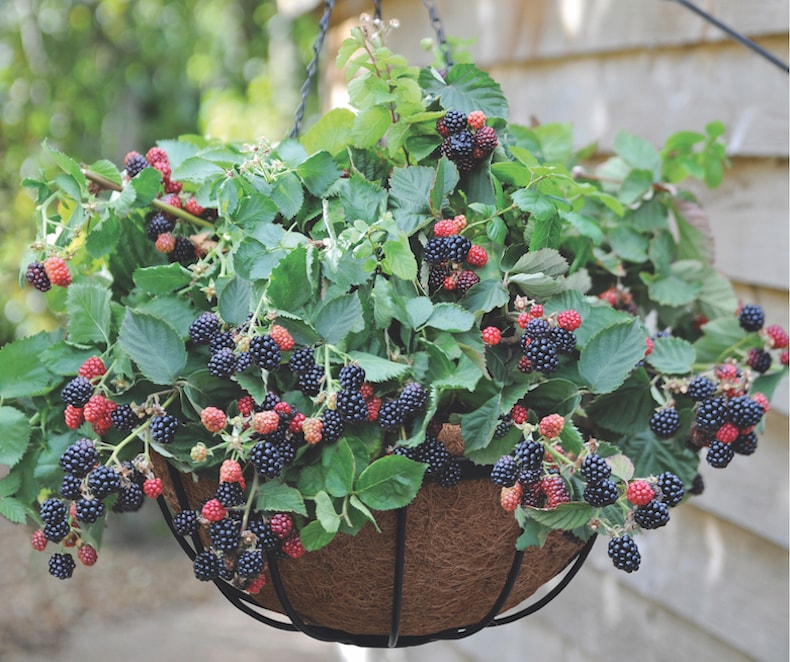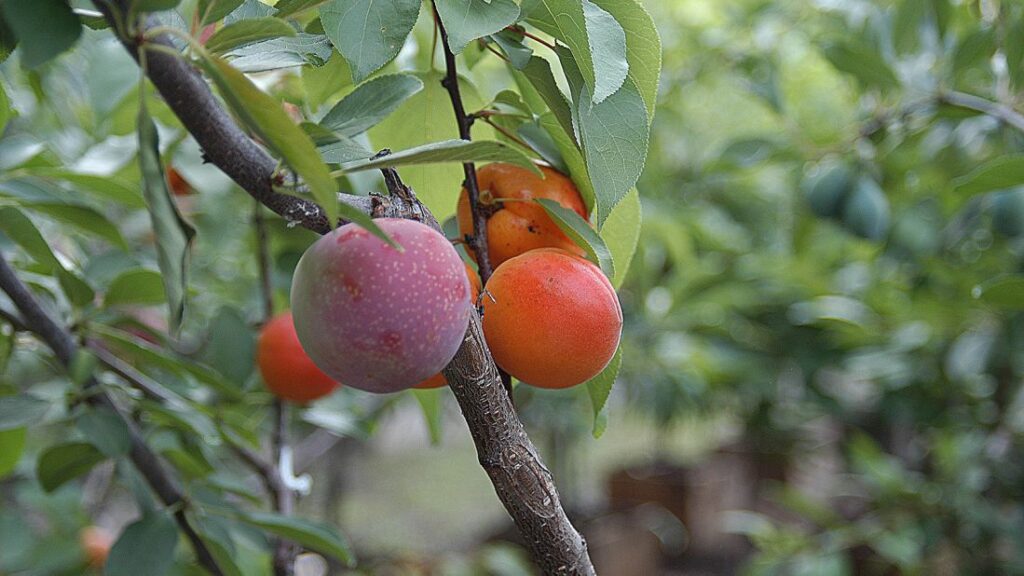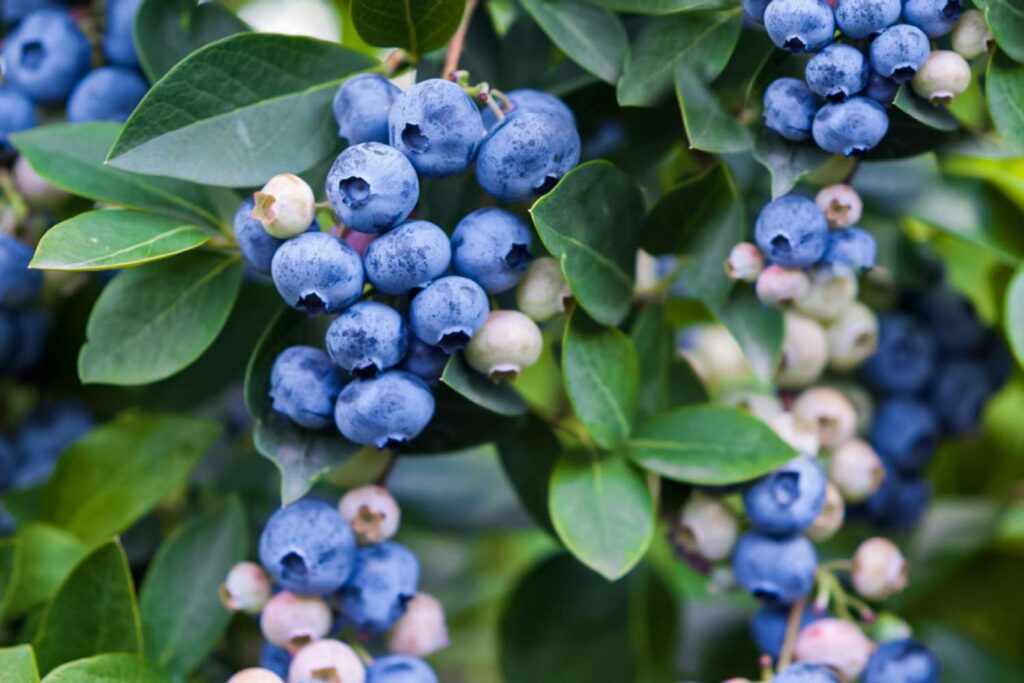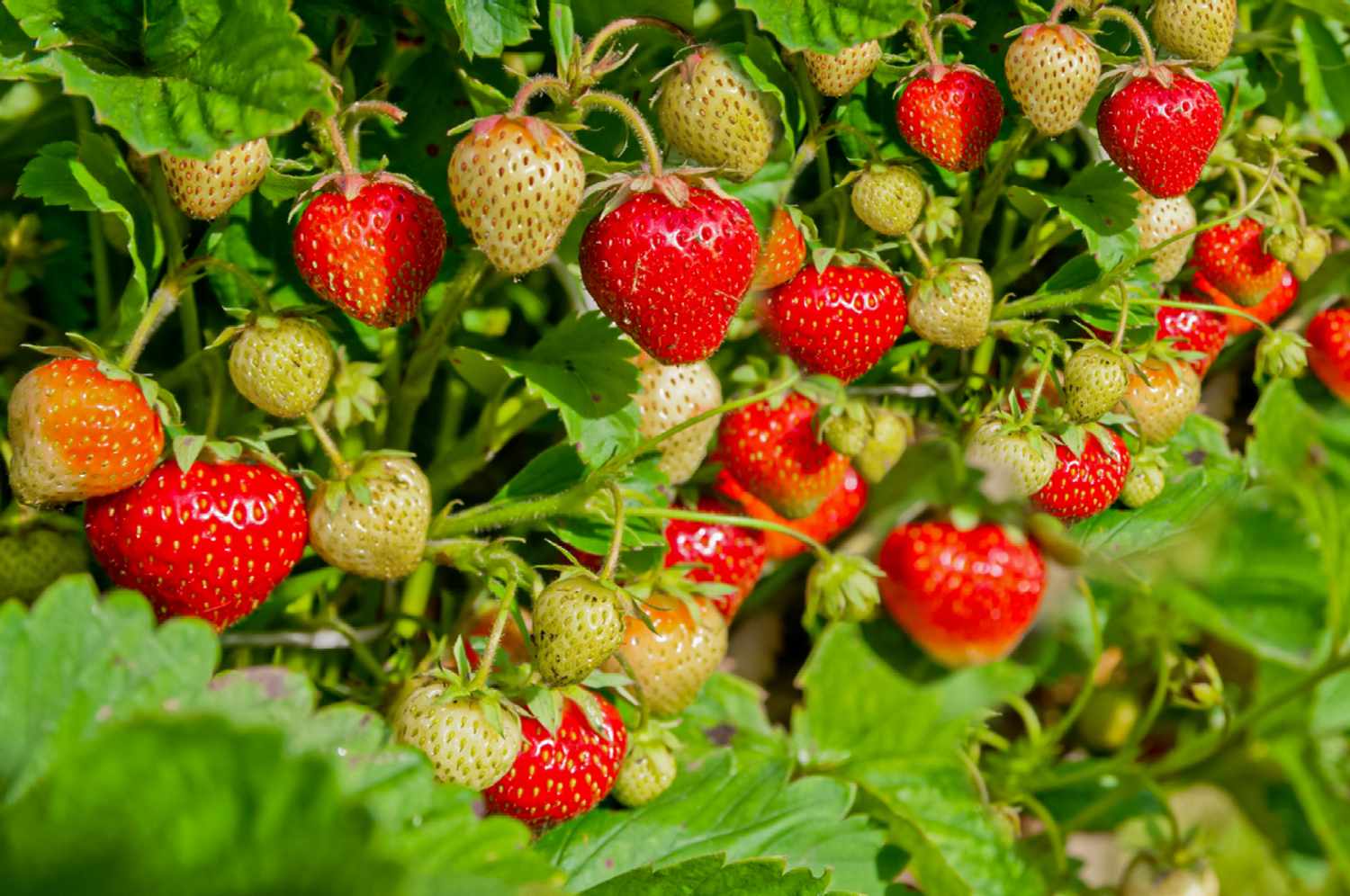Orchard management is a rewarding endeavor that allows you to savor the literal fruits of your labor. Cultivating a diverse range of fruits in your backyard not only provides a constant supply of fresh produce but also connects you with the natural rhythm of the seasons. Successful orchard management requires a combination of horticultural knowledge, strategic planning, and a hands-on approach. This can be very relaxing and you can occupy yourself in this while going through medical weight loss therapy, and need a distraction from food. In this comprehensive guide, we will delve into key aspects of orchard management, from selecting the right fruit varieties to mastering pruning techniques and dealing with common challenges.
Choosing the Right Fruit Varieties

The first step in creating a thriving orchard is selecting the right fruit varieties for your region and climate. Different fruits have specific requirements, and understanding these nuances is crucial for a successful harvest. Consider factors such as chill hours, soil type, and sunlight exposure when choosing fruit trees. Apples, cherries, and peaches, for instance, may have distinct needs that impact their growth and productivity. Research and consult with local agricultural experts to ensure your chosen fruit varieties align with the conditions in your backyard.
Optimizing Soil Health and Nutrients
Healthy soil is the foundation of a productive orchard. Conduct soil tests to assess its composition and make necessary amendments to ensure optimal nutrient levels. While working with the soil in the orchard, choose a farmer’s men’s t-shirt as there is a high chance that you will get dirty in the process. Well-draining soil is essential to prevent waterlogged roots, which can lead to diseases and poor growth. Mulching around the base of the fruit trees helps retain moisture, suppress weeds, and regulate soil temperature. Regularly monitor soil health, and consider organic fertilizers to provide the necessary nutrients without harmful chemical residues. Healthy soil not only supports the current crop but lays the groundwork for future seasons of bountiful harvests.
If you decide you wanna work with plants and switch careers to do so, make sure to do a career test first!
Pruning Techniques for Fruitful Results
Pruning is an art that plays a pivotal role in shaping the growth of fruit trees and maximizing yield. This is a great occupation to have while needing to rest while using personal care services in Dallas TX due to any kind of sickness or injury. Regular pruning removes dead or diseased branches, improving air circulation and preventing the spread of diseases. Additionally, it encourages the growth of new branches, leading to more blossoms and, ultimately, a greater harvest. Each fruit variety has its pruning requirements, so familiarize yourself with specific techniques for apples, pears, and other fruits in your orchard. Timing is also crucial; aim for dormant winter months to prune deciduous trees and after harvest for summer-bearing fruits.
Pest and Disease Management
A thriving orchard is not immune to pests and diseases, but early detection and proactive management can prevent significant damage. Monitor your trees regularly for signs of infestation, such as discolored leaves or unusual spots. Implement integrated pest management strategies, including the use of beneficial insects, traps, and organic pesticides. Prune affected branches promptly, and practice good sanitation by removing fallen fruit and debris. Disease-resistant varieties can also be a valuable addition to your orchard. By staying vigilant and taking preventive measures, you can minimize the impact of pests and diseases on your fruit harvest.
Mulching and Watering Practices
In addition to soil health and nutrient optimization, implementing effective mulching and watering practices is crucial for sustaining a flourishing orchard. Mulching provides a protective layer around the base of the fruit trees, helping to conserve moisture, regulate soil temperature, and suppress weed growth. Many women feel like magician in Los Angeles when they suceed in maintaining their plants alive! Choose organic materials like straw or wood chips for mulching, ensuring they decompose over time and contribute to the overall soil structure. Proper watering is equally vital, especially during critical growth stages and hot weather. Deep watering encourages the development of deep roots, making the trees more resilient to drought conditions. Employ a drip irrigation system to deliver water directly to the base of the trees, minimizing water waste and promoting efficient absorption.
Seasonal Considerations for Orchard Success
Successful orchard management involves a keen awareness of seasonal changes and their impact on fruit trees. Tailor your care routines to the specific needs of each season. In spring, focus on blossom thinning to enhance fruit quality and prevent overcrowding. Summer demands vigilant pest management and adequate hydration for the developing fruits. Fall is the time for harvesting and preparing trees for winter dormancy through proper pruning and fertilization. In this period you can use japanese scissors to prune the plant! Winter, the dormant season, is ideal for major pruning efforts and structural adjustments. By aligning your activities with the natural rhythms of the seasons, you optimize the potential for a continuous and abundant harvest. In addition, organize for yourself during the year a period when you will rest and enjoy the whole year’s effort and go for a relaxing treatment at a luxury spa in Toronto.
Integrating Biodiversity in Your Orchard

While the primary focus may be on fruit trees, integrating biodiversity into your orchard can contribute to its overall health and resilience. Consider planting companion plants that attract beneficial insects, such as ladybugs and predatory beetles, which help control pest populations. Flowers like marigolds and nasturtiums can also serve as natural deterrents for certain pests. These plants make your space more peaceful, which is very much needed when you work from home or have to do anything such as researching the best outdoor vacations in the US and organizing your vacation. Moreover, creating habitat areas for birds and beneficial insects fosters a balanced ecosystem within your orchard. This symbiotic relationship promotes a healthier environment, reducing the reliance on chemical interventions and enhancing the overall sustainability of your orchard.
Exploring Uncommon Fruit Varieties
Diversify your orchard by exploring and introducing uncommon fruit varieties. While apples and peaches are popular choices, consider adding unique and lesser-known fruits to your collection. Exotic varieties not only add visual interest to your orchard but also broaden your culinary possibilities. Examples include the jujube, pawpaw, or persimmon, each with its own distinct flavor profile and nutritional benefits. In addition to being very tasty to eat, these fruits are also suitable for making natural collagen cream. Research the specific requirements of these uncommon fruits to ensure they thrive in your climate. Experimenting with a variety of fruits adds an element of excitement to your orchard and provides you with a wider palette of fresh, homegrown options.
Community Engagement and Orchard Events
Transform your orchard into a community hub by engaging with neighbors and organizing orchard events. Host workshops on orchard management, inviting local experts to share their insights. Organize seasonal fruit-picking days, allowing community members to enjoy the experience of harvesting fresh fruits directly from the trees. Consider partnering with local schools for educational programs that teach students about agriculture, sustainability, and the joy of growing their own food. By fostering a sense of community around your orchard, you not only create a shared space for learning but also contribute to the social fabric of your neighborhood.
Investing in Sustainable Practices
As the caretaker of your orchard, consider adopting sustainable practices to minimize your environmental impact. Explore options for organic fertilizers and pesticides to reduce the use of harmful chemicals. Implement rainwater harvesting systems to supplement irrigation needs and decrease reliance on municipal water sources. Utilize recycled materials for structures like trellises and compost bins. Integrate permaculture principles, such as companion planting and polyculture, to create a self-sustaining ecosystem. By prioritizing sustainability, you contribute to the broader effort of environmental stewardship, ensuring that your orchard remains a thriving and eco-friendly oasis.
Embracing the Art of Grafting
For those seeking to further personalize their orchard, grafting opens up a world of possibilities. Grafting involves combining the rootstock of one tree with the scion, or upper part, of another, allowing you to grow multiple fruit varieties on a single tree. This technique not only maximizes space but also adds an artistic dimension to your orchard. Experiment with grafting different apple varieties onto a single apple tree, creating a miniature orchard within a tree. Grafting also enables the cultivation of heritage or heirloom varieties that might be otherwise challenging to find. Dive into the art of grafting to sculpt a truly unique and customized orchard experience. A plastic surgeon in San Antonio remarks he loves taking are of his tropical fruit trees at home in his free time.
Embracing Technology for Orchard Precision
Modern orchard management can benefit significantly from the integration of technology. Embrace the era of smart agriculture by utilizing tools like soil sensors, weather stations, and drone technology. Soil sensors provide real-time data on moisture levels and nutrient content, allowing you to adjust irrigation and fertilization precisely. Weather stations offer accurate forecasts, helping you anticipate and mitigate the impact of adverse weather conditions on your orchard. Drones provide aerial views, enabling a comprehensive analysis of tree health and identifying potential issues before they escalate. Embracing these technological advancements enhances your ability to make informed decisions and optimize the overall efficiency of your orchard.
Culinary Creativity with Orchard Harvests
Beyond the traditional joy of biting into a crisp apple or juicy peach, your orchard opens up a realm of culinary creativity. Experiment with recipes that showcase the diverse fruits from your harvest. Create tantalizing fruit salads, artisanal preserves, or homemade fruit-infused vinegars. Explore the world of fruit-based desserts, from elegant tarts to rustic cobblers. Hosting orchard-themed dinner parties allows you to share your bounty with friends and family, celebrating the unique flavors of your homegrown produce. As you delve into the culinary potential of your orchard, it becomes not just a source of sustenance but a canvas for delicious exploration.
Educational Outreach and Orchard Tourism
Transform your orchard into an educational destination by offering guided tours and workshops. Share your knowledge of orchard management with visitors interested in sustainable agriculture. Create hands-on experiences, allowing guests to participate in activities like pruning, grafting, or harvesting. Establish partnerships with local schools to organize field trips, fostering a connection between young minds and the wonders of nature. Orchard tourism not only provides an additional income stream but also contributes to raising awareness about the importance of small-scale, community-driven agriculture. Your orchard becomes a living classroom, inspiring a new generation of eco-conscious individuals.
Seasonal Festivals and Orchard Celebrations
Elevate the cultural significance of your orchard by hosting seasonal festivals and celebrations. Organize a blossoming festival in spring, inviting the community to witness the breathtaking spectacle of blooming fruit trees. In summer, celebrate the peak of harvest with a fruit-picking fiesta, complete with live music and local food vendors. Autumn can be marked with cider-making events, offering a taste of freshly pressed juices. Even the dormant winter months can be a time for festivities, with winter solstice gatherings or orchard-themed holiday markets. These celebrations not only bring the community together but infuse your orchard with a lively and festive atmosphere. To learn professional orchard management which you can implement to grow tropical fruits in your yard, you can take online courses.
The Art of Orchard Journaling

Document the evolution of your orchard through the art of journaling. Keep a detailed record of seasonal changes, growth patterns, and notable events. Capture the nuances of each fruit variety’s flavor and texture, noting any experimental grafting or unique additions to your collection. Include sketches, photographs, and pressed leaves to create a visual chronicle of your orchard’s journey. Journaling serves not only as a personal reflection but also as a valuable resource for future planning. As you flip through the pages, you’ll witness the transformation of your orchard and the continuous growth of your knowledge and skills as an orchardist.
Conclusion
In conclusion, the art of orchard management extends far beyond the practicalities of cultivation. It encompasses a rich tapestry of experiences, from embracing technological advancements and culinary exploration to educational outreach and seasonal celebrations. Just as orchards symbolize the natural and nourishing abundance of fruits, mobile IV therapy extends a metaphorical orchard of health by delivering customized infusions of essential nutrients. Both evoke a sense of well-being, offering a harvest of vitality and replenishment, whether from the bountiful produce of orchards or the tailored intravenous treatments administered on the go. Your orchard becomes a dynamic space, not only sustaining you with its fruits but also fostering a deep connection with the community and the land. As you weave together the threads of science, creativity, and community engagement, your orchard transforms into a living masterpiece. Embrace the evolving journey, savor the diversity of your harvests, and continue cultivating the art and joy of managing your backyard orchard. Happy orchard-keeping!
